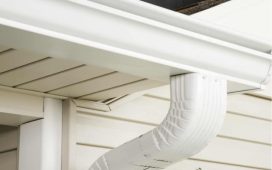Reinforced concrete contains steel bars, wires, or meshes to increase its tensile strength. The combination of concrete and steel reinforcement provides a composite material that is stronger and more durable than each component. Concrete alone is very strong in compression, but weak in tension. The addition of steel reinforcement addresses this weakness in tensile strength. The steel and concrete act together to resist compressive and tensile forces. The concrete protects the steel from corrosion and fire exposure. The bond between the concrete and steel enables them to act compositely. Reinforcing bars are usually round in cross-section to provide optimum bond strength. Deformed bar patterns also enhance the bond with concrete.
Reinforced concrete structures are designed on the principle that steel and concrete act together. The reinforcing steel carries tensile stresses, while the concrete carries compressive stresses. In bending, the top part of a beam is subjected to tensile stress, while the lower part experiences compressive stress. Reinforcing steel is placed near the bottom to handle these tension forces. Shear stresses are also resisted by the reinforcing bars. The quantity and layout of reinforcing steel are carefully calculated for each structural member based on the analysis of forces.
Some basic guidelines for reinforcement are followed. The cover, or the protection of the steel from the environment, should be adequate for durability. The reinforcement layout should facilitate concrete placement without honeycombs or voids forming. Bars need to be properly spliced, anchored, and overlapped. Bends in bars should be avoided where possible. Adequate spacing between parallel bars helps allow concrete flow. Proper reinforcement helps control cracking and deflection.
Reinforced concrete construction utilizes a wide range of component types and shapes. Columns are vertical load-bearing members that usually have heavy reinforcement. Beams are horizontal members, often supporting slabs or additional beams. Slabs are horizontal plate elements, like floors or roofs. Walls provide vertical dividing planes and support lateral loads. Foundations, retaining walls, and tanks are other common reinforced elements. Formwork is constructed to cast the concrete for the desired shapes of these components.
There are several benefits of reinforced concrete as a structural material. It has high compressive strength, allowing structural members to support heavy loads. The reinforcement provides ductility and resistance to tension forces. Reinforced concrete Sutherland Shire structures stand up well to forces from wind or earthquakes. Concrete is non-combustible and provides good fire resistance. It has excellent durability when properly proportioned and placed. Reinforced is also economical, utilizing readily available materials.
When properly designed and constructed, reinforced buildings and structures provide long-lasting, resilient performance. Understanding how concrete and steel interact structurally gives engineers confidence in using this versatile composite material. Reinforced concrete has become a foundation of modern construction and civil infrastructure thanks to its unique combination of strength and affordability. While new materials emerge, reinforced concrete continues to be a highly useful and ubiquitous building technology.



















